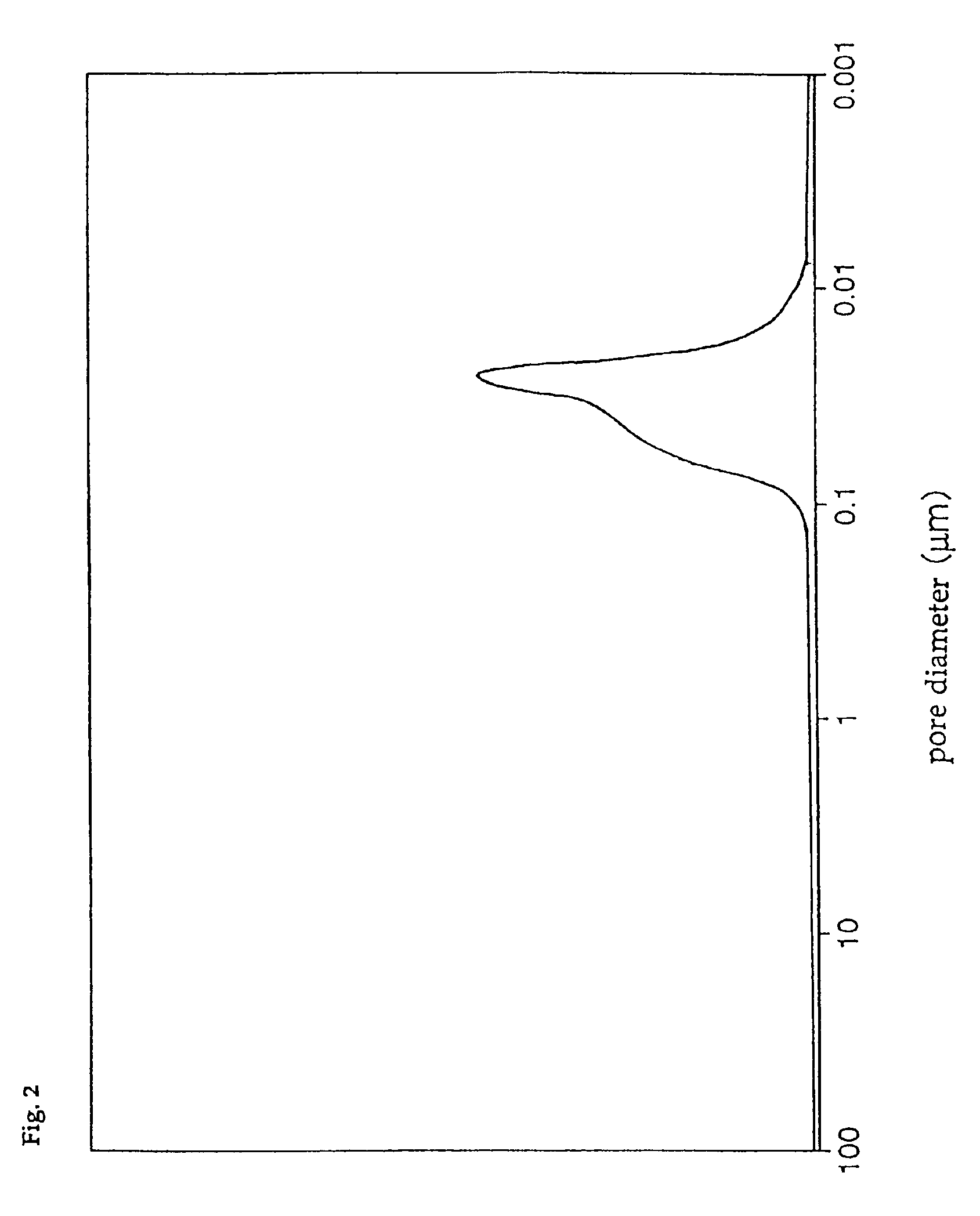Catalyst and process for removing organohalogen compounds
a technology of organohalogen compounds and catalysts, which is applied in the direction of physical/chemical process catalysts, metal/metal-oxide/metal-hydroxide catalysts, and separation processes, etc., can solve the problems of serious influence on human bodies, semi-permanently remain, and extremely poisonous dioxins, etc., to achieve excellent removal, excellent removability, and favorable removal
- Summary
- Abstract
- Description
- Claims
- Application Information
AI Technical Summary
Benefits of technology
Problems solved by technology
Method used
Image
Examples
example 1
A solution of 1.47 kg of ammonium metavanadate and 1.8 kg of oxalic acid in 5 liters of water and a solution of 2.1 kg of ammonium paramolybdate and 0.8 kg of monoethanolamine in 3 liters of water were added to 20 kg of a commercially available titanium oxide powder (DT-51 (trade name), produced by Millennium Inorganic Chemicals Limited). Then, 1 kg of phenol resin (Bellpearl (trade name), produced by Kanebo Co.) and 0.5 kg of starch (as a molding assistant) were further added to and mixed with the resulting mixture. The resulting mixture was kneaded with a kneader and then molded into a honeycomb form having an external form size of 80 mm square, an opening size of 4.0 mm, a wall thickness of 1.0 mm and a length of 500 mm with an extrusion molding machine. Thereafter, the resultant form was dried at 80° C. and then calcined at 450° C. for 5 hours under air atmosphere to obtain catalyst A.
The composition of catalyst A was V2O5:MoO3:TiO2=5:7.5:87.5 (weight ratio). The pore diameter d...
example 2
To begin with, a Ti—Si composite oxide was prepared in the following way. An amount of 21.3 kg of Snowtex-20 (silica sol with an SiO2 content of about 20 wt %, produced by Nissan Chemical Industries, Ltd.) was added to 700 liters of 10 wt % ammonia water, and then they were mixed together by stirring. Thereafter, 340 liters of a sulfuric acid solution of titanyl sulfate (125 g / liter as TiO2, and sulfuric acid concentration=550 g / liter) was gradually added dropwise under agitation. The resultant gel was left for 3 hours, and then filtered off, and then washed with water, and then dried at 150° C. for 10 hours. The resultant product was calcined at 500° C., and then ground with a hammer mill, and then classified with a classifier to obtain a powder having an average particle diameter of 10 μm. The composition of the resultant powder was TiO2:SiO2=8.5:1.5 (molar ratio). In an X-ray diffraction chart of this powder, no clear characteristic peak of TiO2 or SiO2 was seen, but a broad diff...
example 3
Honeycomb-form catalyst D having an external form size of 80 mm square, an opening size of 4.0 mm, a wall thickness of 1.0 mm and a length of 500 mm was prepared in the same manner as in Example 2 except that: the titanium oxide powder and the Ti—Si composite oxide were further ground with an air grinder, and the phenol resin was not added in the kneading step, and a deaerating layer was provided before the molding machine to remove air from the kneaded product.
The pore diameter distribution of catalyst D was measured with a mercury injection type porosimeter, with the result that only the first group of pores having a pore diameter distribution peak in the range of 0.01 to 0.05 μm was found, and that the third group of pores having a pore diameter distribution peak in the range of 0.8 to 4 μm was absent. In addition, the total pore volume of catalyst D was 0.30 cc / g, and the ratio of the pore volume of the first group of pores to the total pore volume was 85%, and the specific surf...
PUM
| Property | Measurement | Unit |
|---|---|---|
| pore diameter distribution | aaaaa | aaaaa |
| pore diameter distribution | aaaaa | aaaaa |
| pore diameter distribution | aaaaa | aaaaa |
Abstract
Description
Claims
Application Information
 Login to View More
Login to View More - R&D
- Intellectual Property
- Life Sciences
- Materials
- Tech Scout
- Unparalleled Data Quality
- Higher Quality Content
- 60% Fewer Hallucinations
Browse by: Latest US Patents, China's latest patents, Technical Efficacy Thesaurus, Application Domain, Technology Topic, Popular Technical Reports.
© 2025 PatSnap. All rights reserved.Legal|Privacy policy|Modern Slavery Act Transparency Statement|Sitemap|About US| Contact US: help@patsnap.com



